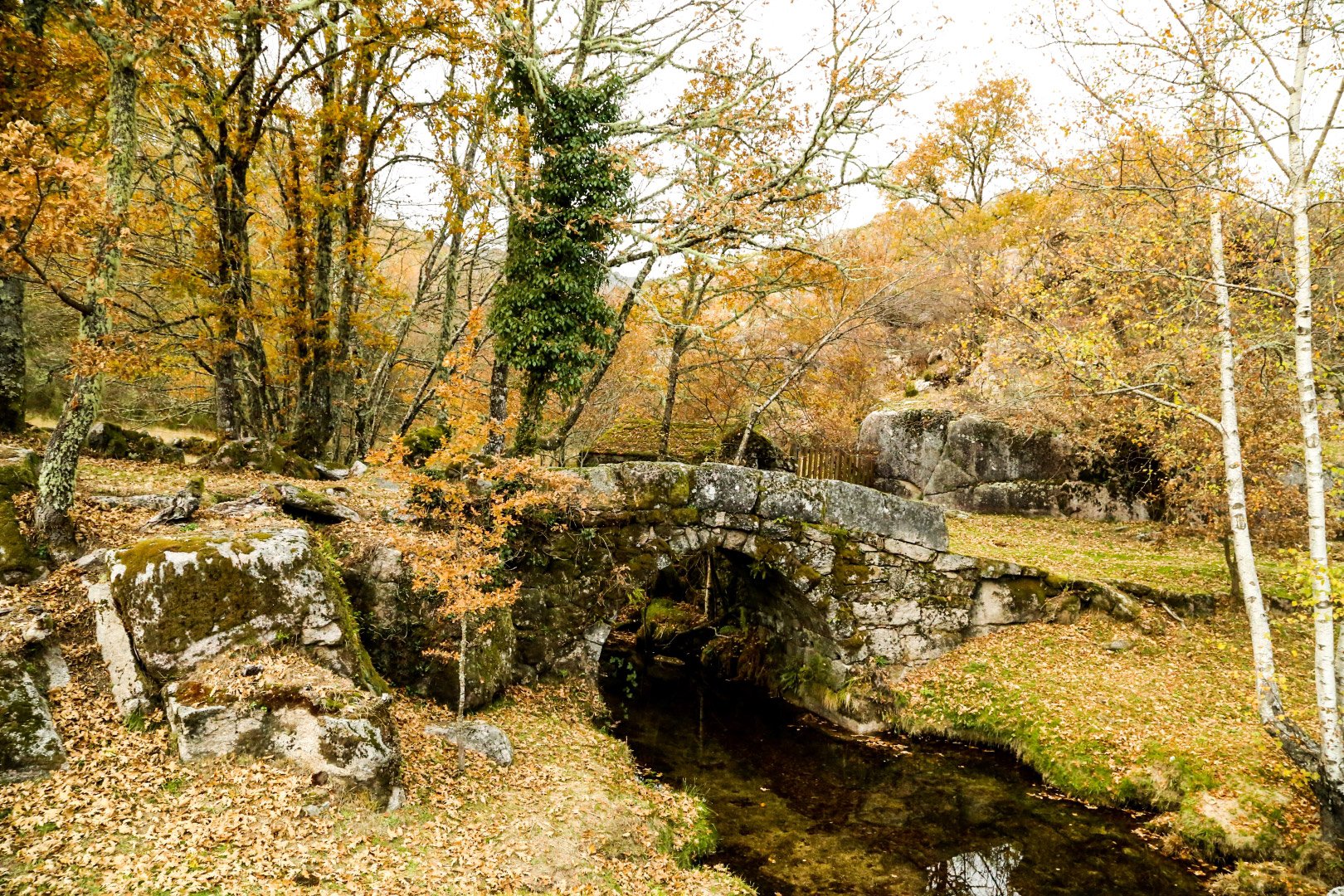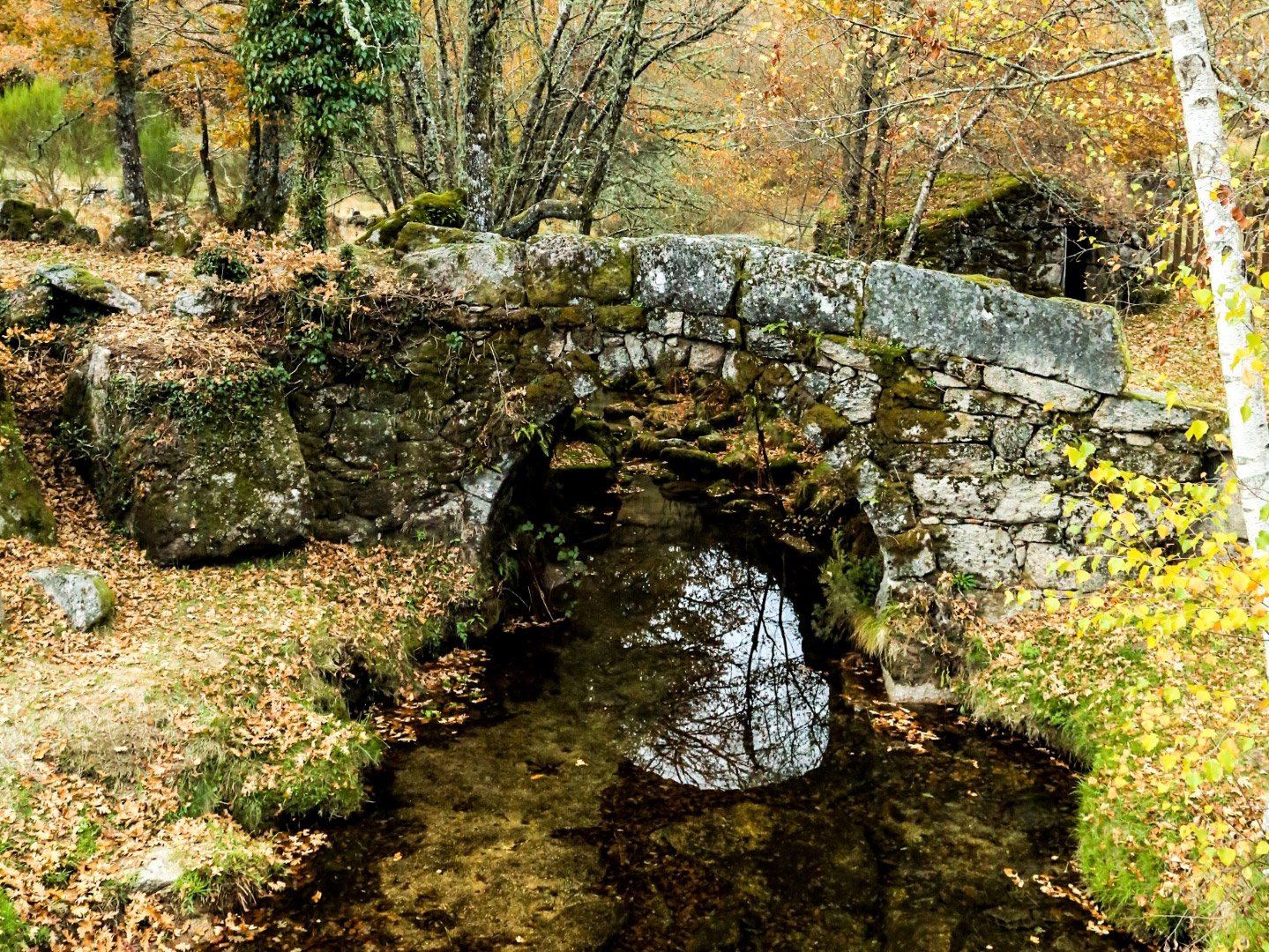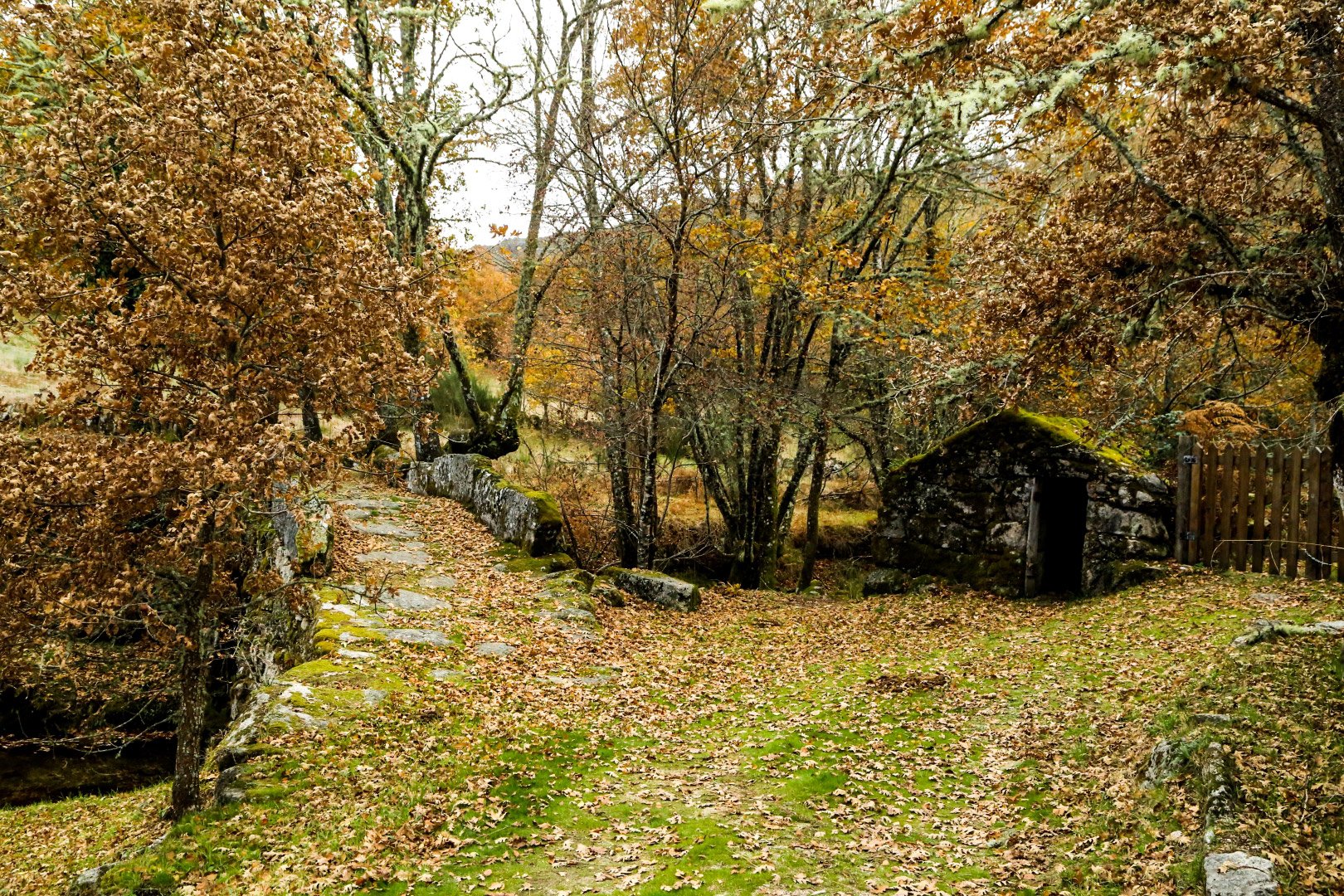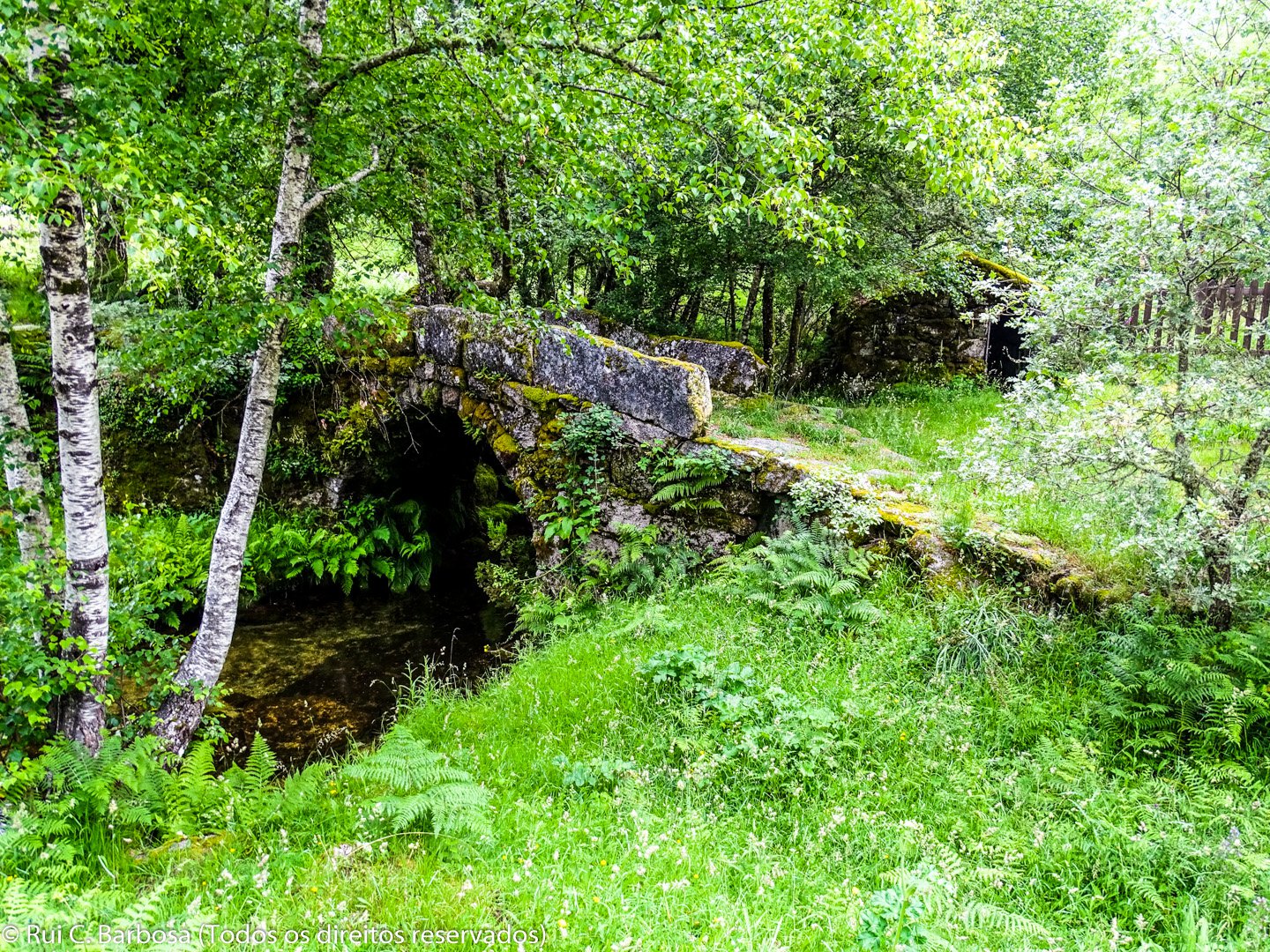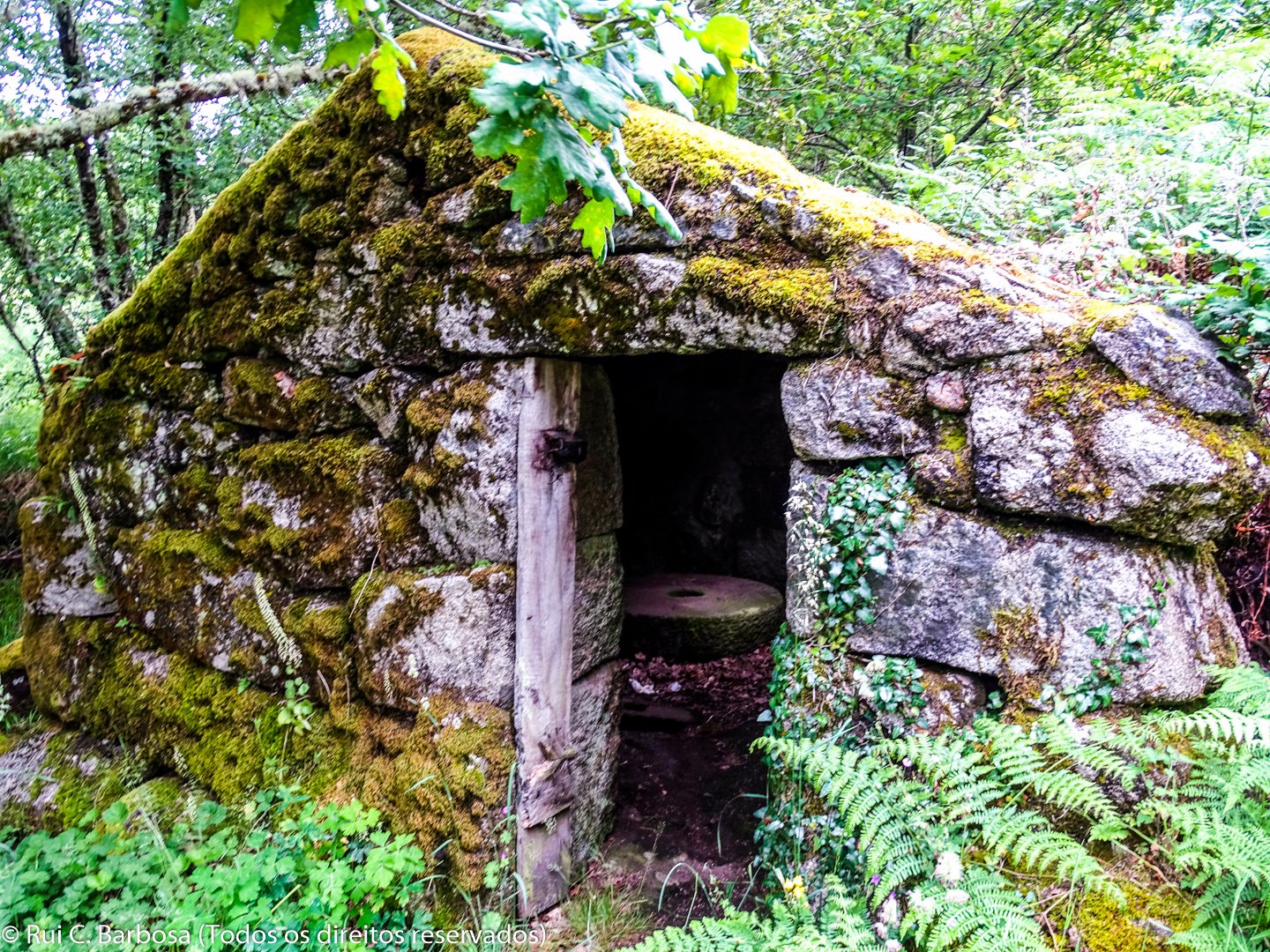The Castro Laboreiro area has an interesting group of bridges of national interest. Assureira Bridge, like others built across the river Laboreiro and its tributaries, confirms how in the Middle Ages the ancient communication structures from Roman times were re-used or adapted with the result that today some display characteristics of these two distinct phases of use.
Assureira Bridge, located on Barreiro stream, tributary of the Laboreiro River, was rebuilt in medieval times, replacing the former Roman bridge, from which materials were taken and re-used. It has a gentle easel deck, over a single perfectly formed arch, approached by access ramps, the eastern face of the arch having regular stone staves and the west face being irregular. The deck pavement is formed of large slabs on the eastern side and by small slabs on the western half and protected by rough stone walls.
Next to the bridge stands a mill and a more recent pontoon and, a few meters further on, the chapel of São Brás. These three elements are classified as IIP (property of public interest), thereby being protected by the Portuguese State.
The chapel of São Brás was probably built in the XVI/XVII century. It is rectangular in plan with a single-nave, preceded by a large porch, also rectangular, of contrasted volumes and having a two-pitched tiled roof over the nave and three-pitched over the porch. Facades are in irregular granite stonework, and with the nave terminating in a gable crowned by a Latin cross and pyramidal pinnacles with balls, these being of more recent construction. Inside, the floor is made of masonry slabs, white painted plastered walls and a sky blue painted wooden ceiling.
Assureira Mill, currently abandoned, is a horizontal wheeled water mill, built in the XIX/XX century. It is small, rectangular in plan and arranged perpendicularly to the water course, with facades in pointed stone.


